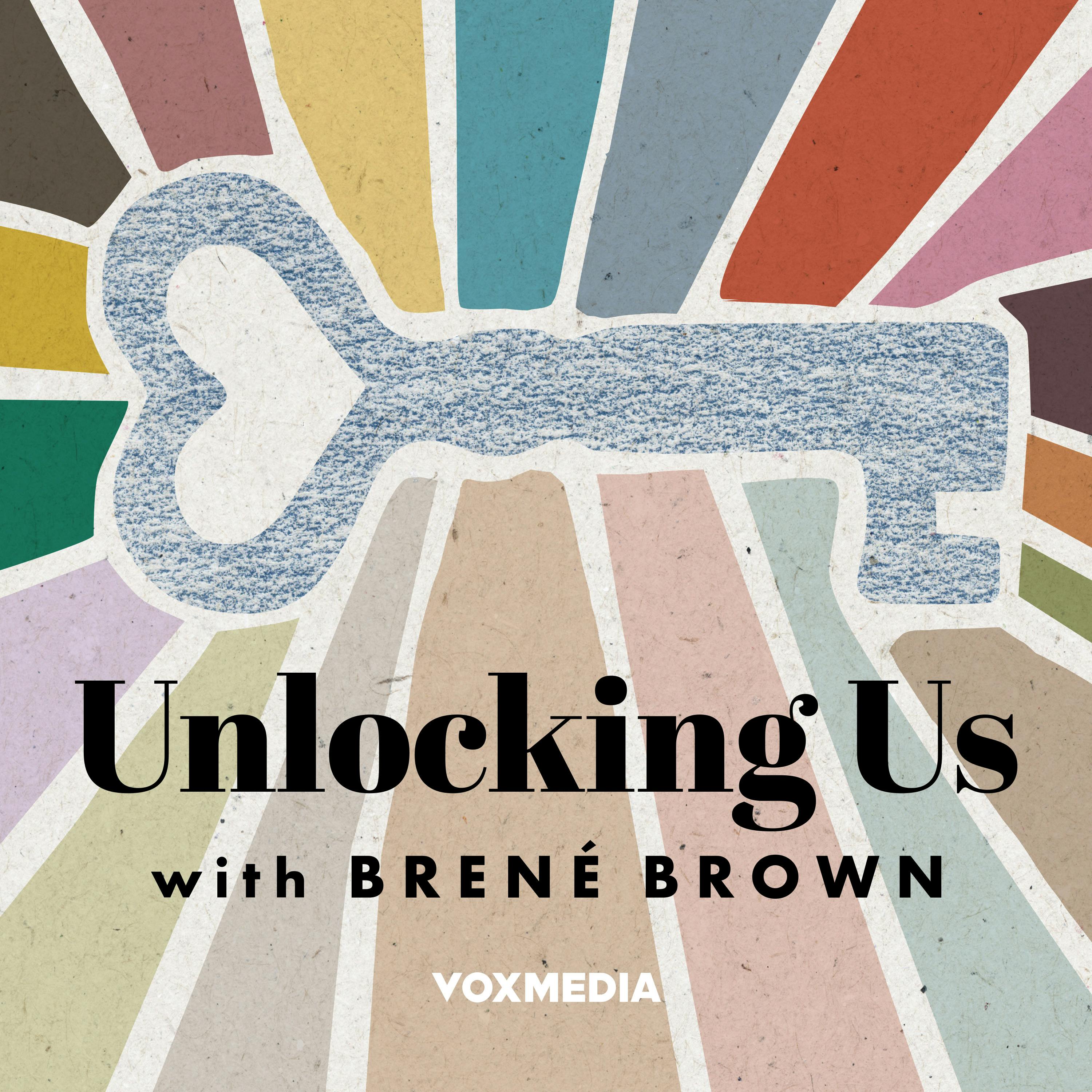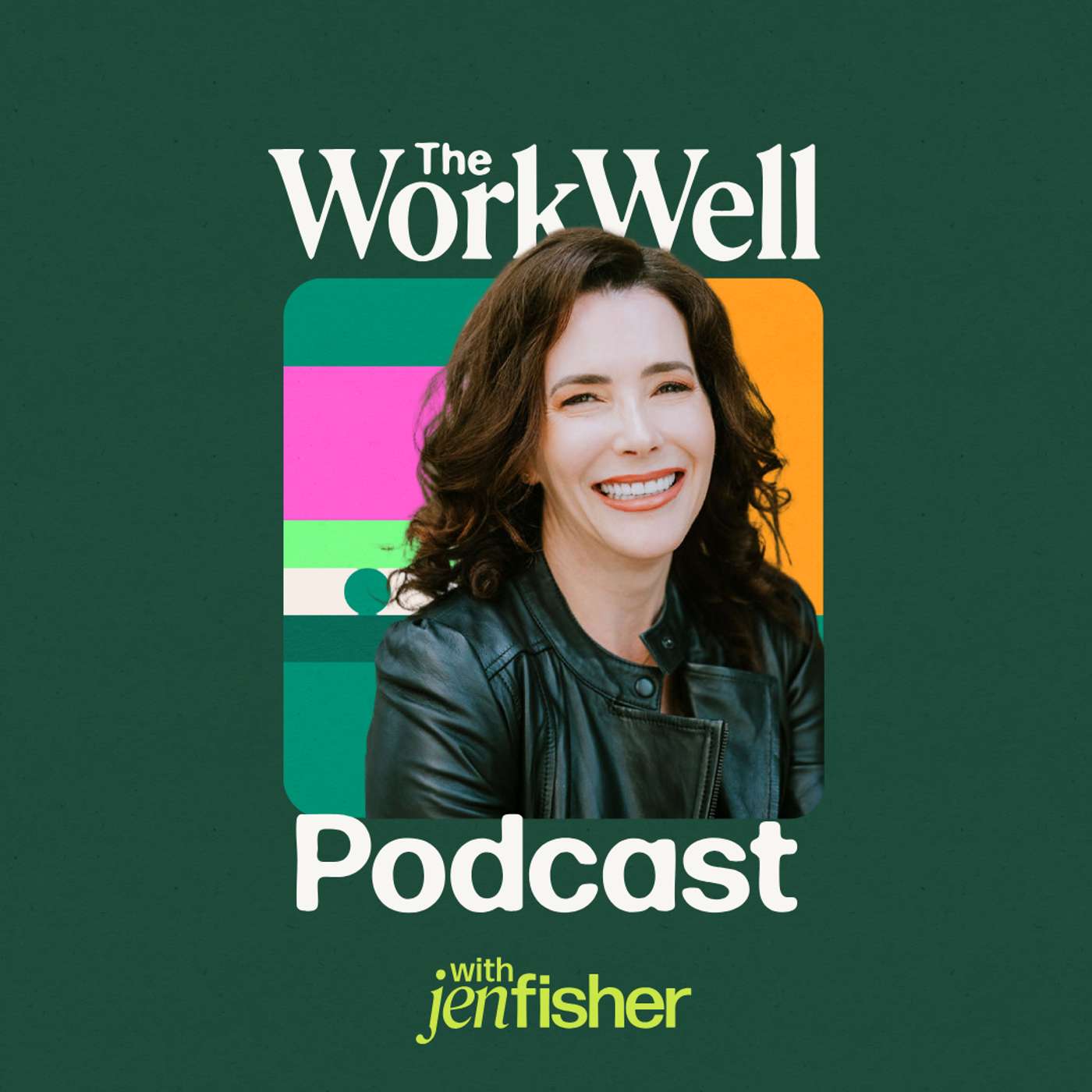
The Balanced Badass Podcast®
The Balanced Badass Podcast® is the show for high-achieving professionals who want to prevent burnout, master work-life balance, and stay badass without losing their sanity.
Each episode, we’re not just tackling your overflowing calendar and keeping your household on track; we’re getting into burnout prevention and recovery strategies so that you have time to breathe, laugh, and savor that much-needed glass of wine at the end of the day.
Think of this podcast as your regular dose of practical advice, a touch of humor, and a little tough love, like catching up with a friend who just gets it. Whether you’re navigating burnout, balancing meetings and meal prep, or carving out moments of self-care, this is the space where we figure it out together.
Disclaimer: My content is for educational purposes only and not a substitute for professional medical or mental health advice. For serious concerns, please consult a qualified provider.
The Balanced Badass Podcast®
How to Survive in a Resource-Strapped Role
Ever been dropped into a surprise Monday morning meeting with bad news? In this episode, we're spilling the tea on surviving (and thriving) in a resource-strapped job where budgets are frozen and headcounts are shrinking.
We'll break down practical strategies to stay effective without burning out, including the five Cs framework to diagnose your constraints, how to advocate for what you need with data (not drama), and smart ways to protect your wellbeing.
Whether you're staying put or planning your next move, this guide is your lifeline.
Check out the detailed show notes (https://tarakermiet.com/podcast/) and leave your thoughts or questions about today's topic.
Got something to say? Text me!
-----
I’m Tara Kermiet, a leadership coach, burnout strategist, and host of The Balanced Badass Podcast®. I help high-achievers and corporate leaders design careers that are successful and sustainable.
Here, you’ll find tactical tools, leadership lessons, and burnout education that just makes sense.
👉 Start by taking my free Burnout Drivers Mini Assessment
😍 Join my community on Instagram (@TaraKermiet) and/or TikTok (@TaraKermiet) so we can stay connected!
🎤 Got a question, a topic you want me to cover, or just want to share your thoughts? I'd love to hear from you! Send me a DM or email.
Stay balanced, stay badass, and make good choices!
Disclaimer: My content is for educational purposes only and not a substitute for professional medical or mental health advice. For serious concerns, please consult a qualified provider.
[00:00:00] It is Monday morning. You've got a cup of coffee that's barely kicked in yet, and your boss drops a surprise invite on your calendar emergency. All hands at 9:00 AM you walk into the conference room, half the chairs are already empty because the hiring freeze means no new faces and the mood is heavier than that third cup of cold brew that you're about to need.
The director clears her throat and explains that due to market conditions. The company is tightening budgets. No new headcount. All discretionary spending is paused and everyone's encouraged to find creative ways to make it work.
Around the room, you can feel people trying to look calm while mentally calculating what's about to land on their already maxed out plates. You glance at your own project list and realize that two of your three teammates are on leave next month. You care about the work and you don't wanna let your team down.
But in that moment, you know that the math just isn't math, and [00:01:00] you can't meet those deadlines without something giving. I know that scene because I've lived it, and if you're listening to this episode, I'm guessing that you have too. Today we're talking about how to stay effective when you're stuck in a resource strapped role.
Let's go back to that meeting. You take a breath afterwards and you head back to your desk. The chatter in the hallway is all nervous jokes and questions about how you're supposed to manage. Maybe you open your project board and watch the tasks just multiply, like popcorn, kernels, and hot oil. What just happened isn't an isolated bad Monday.
It is part of a much bigger pattern that's shaping workplaces everywhere.
Companies are tightening budgets, freezing headcount, and asking employees to carry workloads designed for teams twice the size. Sometimes it's because of economic pressure. Sometimes it's because leadership has bought into this do more with less kind of mantra, and sometimes it's simply [00:02:00] habit. The moment your company says, make it work without giving you the resources to actually do the work, that's not on you, that's a structural problem.
And this can be sneaky because at first it looks like and feels like an opportunity. Look at you stepping up, handling more than most people could. That feels good. You're proud to be dependable. You're getting the gold stars. Many of us crave. But then you fast forward a few months and suddenly that pride has turned into flat out exhaustion.
The extra work that you took on temporarily has now become permanent, and the systems that were supposed to support, you haven't been fixed. So you end up internalizing what is really a systemic scarcity issue as a personal productivity issue. I want you to hold onto that perspective as we move forward.
Because the rest of this episode isn't about squeezing one more drop of energy out of yourself. It's about reframing how you see the [00:03:00] problem, understanding where you do have influence, and building strategies to protect both your performance and your wellbeing in an environment that may never give you what you need.
When you zoom out, you start to see patterns that explain why this keeps happening. Companies talk about efficiency and lean operations, but what that really means on the ground is fewer people, older tools and bigger expectations.
Budgets get trimmed, roles stay vacant after someone leaves, and suddenly the same amount of work or more is spread across a smaller team.
Now, here's the thing. You can't fix a broken budget or conjure up three new team members out of thin air, but you can get crystal clear on what's actually constraining you. This is where I invite you to take a strategic breath and map out what's really driving the squeeze. I like to call this a constraint ecosystem check, and it's the first move I make with every client who's stuck in a resource draft role.
Think of it like turning the lights on in a messy garage. You can't clear a path until you see [00:04:00] where the boxes are stacked and which ones are blocking the door. So start by looking at the obvious surface level pressures. What's missing right now? Is it people? Time, money, tools, all of the above. That's the structural layer.
The conditions that you can point to on a spreadsheet, but don't just stop there. The deeper layers matter just as much. Are there bottlenecks, duplicate approvals, or we've always done it this way, kind of habits that chew up hours. Maybe the unspoken rule is say yes to everything, or the first one to log off looks lazy, and those silent expectations can double your workload without a single new project.
Also, look at your patterns. That one's tricky because high achievers, people like you often have internal scripts that say, if I don't pick up the slack, I'm failing. And that belief can be just as limiting as an empty budget line. So I walk leaders through these layers using my five Cs [00:05:00] framework.
Conditions, culture, convictions, choices, and capacity because it forces you to see the full picture. Instead of blaming yourself for being inefficient, you might find that only one or two of those Cs are truly within your control right now, and that's powerful intel. It shows you where to focus your energy and where to stop bleeding time.
So grab a notebook or open up a blank doc and sketch out those five words across the top. Again, those were conditions, culture, convictions, choices, and capacity. Under each one, jot every pressure point that you can name. Don't filter or problem solve yet. Just capture it right now. 'cause from here we can start carving a realistic path forward.
Now that you've mapped out your constraint ecosystem and you can actually see what's pressing on you, the next step is to talk about what enough looks like. Because here's the truth, in a resource strapped role, you will never be able to do it all. And I know that sounds obvious, but if you're anything like me, your instinct is gonna be to [00:06:00] try anyway.
You tell yourself, if I just organize better, if I just work longer hours, maybe if I push a little harder, I can keep everything afloat. That instinct, while strong, is also a fast track to burnout. So instead of trying to win an impossible game, we need to redefine the rules. I call this creating your minimum viable impact, or MVI.
Think of it like a product launch. You don't try to deliver every feature on day one. You focus on the handful of things that actually deliver value. The same thing goes for your role. So first, look back at that list that you made under each of the five Cs. Which tasks or projects directly connect to your team's top goals?
Which ones would genuinely change something important if they slipped or maybe they wouldn't be ruthless here. Second, pick the two or three outcomes each week that must happen to protect those top goals. That's gonna be your MVI. Everything else [00:07:00] becomes negotiable, defer, or maybe even droppable. Now, this is where you have to retrain your brain.
High achievers are conditioned to measure worth by volume, but in a resource starved environment, volume just isn't possible. Executives notice when someone can separate mission critical work from busy work, especially when resources are tight. So you're modeling the kind of clarity that keeps teams afloat when the water's rising.
And now that you've redefined what enough looks like, you're ready to make the next move, which is learning how to actually advocate for what you need without sounding like you're just complaining. I know the hesitation here. You don't wanna be that person who's always talking about how hard things are.
But in a resource strapped role, silence can be expensive because if you don't speak up, leadership just assumes that the current workload is fine and then nothing changes the key is to advocate like a strategist, not a victim. Think of it as presenting a business case, not begging for relief.[00:08:00]
You wanna position yourself as the person who can clearly connect the dots between resources and results. These are the three moves that I recommend to make advocacy work. The first is to lead with data, not drama. When you're already stressed and stretched, it's natural to one event. We can't keep up, we're drowning.
This is impossible. But the problem is leaders have heard that before and often it just fades into background noise. What cuts through for them is data. So instead of saying, we don't have enough people. Say, here's what's happening. Our customer response times have slowed by 18% in the past two months, and that's leading to a spike in complaints.
Or we've missed three deadlines in the last quarter directly because tasks are bottlenecked with one person who has no backup. Those specifics change the conversation. Data makes the risk visible, and risk is the language that most executives understand. From there, you wanna frame it as risk mitigation, not a favor.
If you [00:09:00] frame resource requests as, please help me, I can't handle this. It sounds like a personal plea. Leaders may sympathize, but they're balancing a dozen competing priorities themselves. So if you frame it as a business risk, lost revenue, customer churn, compliance exposure, it's no longer about helping you.
It's about protecting the organization. So, for example, you might say, without a temporary contractor, we risk losing $150,000 in renewal revenue this quarter because response times are slipping. That's a very different conversation than we're all exhausted and need help. Harvard's research on negotiation backs this up to resource requests, framed in terms of risk prevention, have a 40% higher approval rate.
It's not manipulation. It's simply translating the reality of scarcity into the language that decision makers are primed to act on. And then once you've done this, then present an option ladder. This is where a lot [00:10:00] of people get stuck. They ask for the moon, they get told no, and then they feel defeated.
Instead, build an option ladder, show that there are multiple levels of solutions so that the leader isn't forced into an all or nothing decision. So, for example, you may have level one where you request a three month contractor to handle overflow. Then level two might be an automation tool that reduces manual data entry, and level three could be a full-time headcount request for the next fiscal year.
By giving leaders a range, you're not cornering them. You're making it easier for them to say yes. They can pick the option that fits the budget today while acknowledging the larger need for tomorrow.
And even if they go with the cheap option, you've still anchored the conversation around the bigger need and that plants a seed. Advocacy isn't just about getting what you need today. It's about building a reputation. When you come to the table with clear data, business [00:11:00] risk framing and multiple solutions, you're showing yourself as a strategic thinker, not just a worker bee who can't keep up.
You become the person leaders look to when they want to understand the truth that's happening on the ground, and that kind of credibility has long tail, even if you don't get the exact resource you asked for. You've positioned yourself as the one who can articulate reality with clarity and courage. And that's leadership capital.
And you can cash that in later when bigger opportunities come your way. Think of it as building a case like an attorney, laying out evidence. You're protecting the business by making invisible costs visible, and you're protecting yourself by refusing to silently carry the burden until it breaks you. And once you've learned how to advocate strategically, the next challenge is then what do you do day to day to keep yourself from burning out while waiting for those changes to actually land?
Think of your nervous system like a bank account. Every meeting, every late night email, every extra task is a withdrawal [00:12:00] in a resource strapped role. Those withdrawals are constant, and if you don't make deposits, you end up overdrawn. The science is pretty clear on this. Chronic stress raises cortisol and studies have shown that it can reduce working memory capacity by up to 25%.
That's not just feeling tired, that's your brain literally struggling to think clearly. But the good news is that small consistent recovery practices rebuild your balance faster than waiting for a long vacation. That's why I coach clients to treat recovery as infrastructure, not as something extra they do if there's time.
Here's what that looks like in practice. Start by implementing ultradian rhythms, by working in 90 minute focus sprints, followed by 15 minutes of true rest.
Research shows that the simple pattern of 90 to 15 improves sustained attention by about 20%. Also practice bookend rituals. Start and end your day with intentional cues that tell your [00:13:00] brain when to switch on and when to power off, like a five minute prioritization ritual in the morning, and maybe a shutdown checklist in the evening.
And be sure to integrate active rest into your day. I hate to break it to you, but scrolling your phone does not restore your nervous system. Brief walks, breath work, or even jotting down what you're grateful for. Those are gonna be the micro deposits that actually lower stress markers. These are evidence-based tools that buy back clarity, creativity, and stamina in an environment that keeps draining you. They don't necessarily change the fact that you're under-resourced, but they do change your ability to show up and still deliver without burning yourself to the ground. They keep you in the game long enough for your advocacy to take root, and if necessary, they give you the bandwidth to plan your next career move with a clearer head And speaking of that long game, how to convert everything you're learning in this tough season into career capital you can use for promotions, negotiations, or even a bold pivot when the timing is right [00:14:00] is really important. When you're deep in the grind of a resource strapped role, it's easy to think of yourself as just surviving day to day, but if you look at it through a different lens, this chapter can also become one of the most valuable career accelerators you will ever experience.
Because leading effectively under constraint forces you to develop skills that people in cushier roles don't get to practice until much later. And those skills like navigating ambiguity, influencing without authority, making tough trade-offs are exactly what companies want in their senior leaders. I encourage my clients to build what I call a future value dossier.
It's not just a brag file of wins. It's a structured record of what you achieved and what you achieved it in spite of, write down the outcomes you delivered, the constraints you were facing, and the creative solutions you applied. So maybe one of your bullet points might be that you reduced customer response time by 12%, even with two open head count [00:15:00] gaps by redesigning your intake process.
Another one could be that you delivered quarterly reporting with no analytics tool by building an interim dashboard in Excel and training the team to use it. Those kinds of statements don't just say that, yes, you did the job, but they say that you led in adversity. They tell a future boss or a promotion panel, or even a hiring manager at another company.
I can create impact when things are messy, and that's leadership capital. But you also need to know when staying becomes too costly. Research shows that more than 18 months in a chronically under-resourced role increases the risk of burnout by about 40%. That's not a warning to bail at the first sign of scarcity, but it is a reminder to check the balance sheet of your own wellbeing.
Ask yourself pretty regularly, am I gaining resilience and credibility here? Or am I depleting myself so badly that I won't have the energy to take the next step when the opportunity comes? Sometimes the best long game [00:16:00] is staying and building a track record of resilience.
Other times it's making a strategic exit with your dossier is proof of what you're worth. And either way, the experience you're collecting now becomes a leverage for a raise for a bigger role or for a pivot into something new. So, as you're making those deposits back into your nervous system day to day, don't forget to bank the bigger deposits into your career story too.
Those notes that evidence, those skills, they're all the receipts that you'll cash in later. And here's where I wanna leave you, because everything we've covered points to one simple truth. Thriving in a resource strapped role isn't about becoming a superhero who never sleeps. It's about designing a way of working and a way of leading that keeps you whole while you keep moving forward.
When you walk back into that conference room tomorrow, the budgets may still be frozen, and the headcount chart may still be blank, but you'll have a different playbook. You'll know how to spot the real drivers of scarcity instead of blaming [00:17:00] yourself. You'll have a minimum viable impact plan that tells you what truly matters.
You'll have the language and the data to advocate for change without apology, and you'll have a nervous system routine that protects your energy so you can keep showing up clearheaded and steady. Most importantly, you'll have a growing bank of proof that shows that you can create impact when things are messy.
That record is career capital.
It positions you for promotions for stronger salary conversations, or for a pivot into a role or company that aligns better with your values. Whether you stay and rise or decide it's time to move on, you'll do it from a place of strength instead of depletion. If you're listening to this and thinking that you need help putting these pieces together for yourself, that's exactly what I do.
In my coaching sessions. I help leaders map their constraints, define their minimum viable impact, build a strategic advocacy plan, and create recovery systems that actually work in real life. You don't have to figure this out [00:18:00] alone, but even if you take just one piece from today's conversation, I hope that it's this.
Your value is not measured by how much you can carry when the cupboards bear. Your value is in how you show up, how you protect your wellbeing, and how you lead with clarity when the environment around you feels anything but clear. As always, thanks for tuning in this week. That's all I got for you. I'll catch you in the next episode.
Take care, friend.
Podcasts we love
Check out these other fine podcasts recommended by us, not an algorithm.

Happier with Gretchen Rubin
Gretchen Rubin / The Onward Project
The Gratitude Attitude Podcast
thegratitudeattitudepodcast
Before Breakfast
iHeartPodcasts
A Bit of Optimism
Simon Sinek
Oprah's Super Soul
Oprah
Stuff You Should Know
iHeartPodcasts
Unlocking Us with Brené Brown
Vox Media Podcast Network
We Can Do Hard Things
Treat Media and Glennon Doyle
Take Out Therapy: End Overthinking & Overwhelm for Empathic High Achievers
Rebecca Hunter, MSW
FRIED. The Burnout Podcast
Cait Donovan
